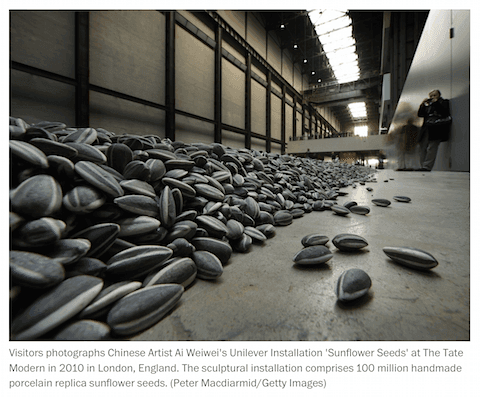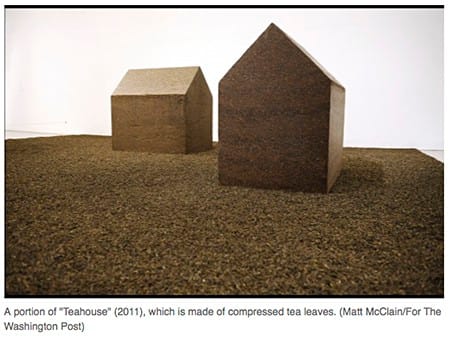
Weighing in on Ai Weiwei
When I saw Ai Weiwei’s sculptural artwork featured in the Washington Post, I remembered another artist’s work I wrote about in the post Careful Where You Step.
Like Motoi Yamamoto’s work using salt, Ai Weiwei’s artwork uses large amounts of organic and simulated-organic materials, like sunflower seeds (porcelain replicas painted white) and reclaimed wood arranged in thought-provoking ways like filling a cavernous hall or used to create a map of China.
He also uses manufactured materials like re-bar, glass and metal to produce memorable installations like Straight and Cube Light, which I can see as part of the Hirshorn’s permanent collection and the famous Bird’s Nest concept for the Chinese Olympic stadium in 2008.
Weiwei’s art, however, carries messages about his country with its politics of corruption and lack of transparency. Much like Liu Bolin becoming well known for his artwork while revealing political undertones and as a master of disguise, disappearing into his artistic environment, so too has Weiwie become a dissident artist. His artwork has gotten him into trouble, however. He has been ‘imprisoned’ in China since 1993, when he returned after a decade of working in the USA. China will not return his passport and is virtually holding him captive in his motherland. At least you can still see his artwork with his ideas being boundless.
Read more of the full article here.
Click here to see a post featuring the Birds Nest on Beijing’s Buildings.






